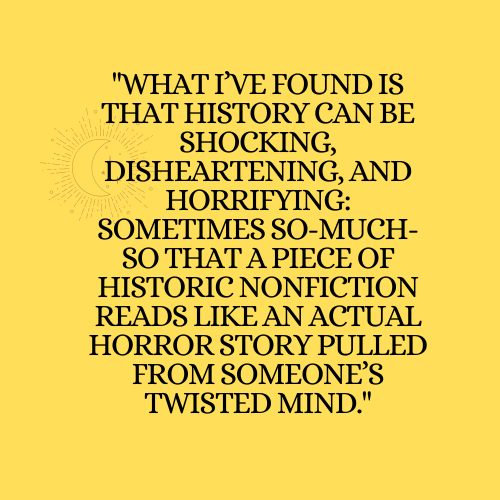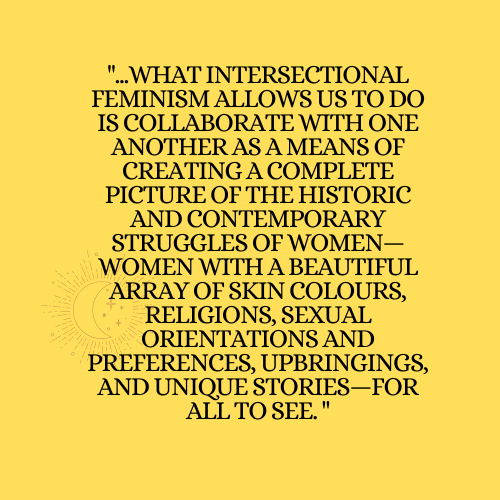What is “Intersectional Feminism”?
I’ve talked about feminism quite a lot up until this point—it’s almost like feminism is the theme of this blog or something—but, to be quite frank, I don’t think I’ve been clear about what feminism actually is.
Regardless of what some individuals think, feminism is not the belief that women should have more political, social, economic, and sexual rights than men, nor that women are superior to men in any way. There is a different term for this belief. I attempted to find this term by typing “the belief that women should have more rights than men” into Google. The first article that popped up was about feminism.
Shit!
Anyhow, I think the term I was looking for was “misandry,” which is basically the opposite of misogyny.
Feminism is not misandry.
In the traditional sense, feminism is the belief that women should have equal political, social, economic, and sexual rights to men. Nowadays the whole idea of there only being two genders—men and women—is also being challenged and dismantled, and rightfully so. We might be better off saying, then, that feminism is the belief that women should have equal political, social, economic, and sexual rights to all genders.
And let me also be clear that, yes, all genders deserve the same rights: we all deserve to be treated as human beings because that’s exactly what we are.
Intersectional feminism considers more than just the gender aspect of fighting for equal rights; it considers factors such as race, ethnicity, class, religion, sexual orientation, and whether a woman identifies as cisgender or transgender. This is not an exhaustive list, rather a few examples. What this means is that a woman will likely have even more difficulty attaining equality if she is also, for example, a woman of colour. A woman of colour may have to deal with multiple types of discrimination on a daily basis—sexism and racism—as opposed to a white woman who will oftentimes be discriminated against only because of her gender.
In other words, intersectional feminism recognizes and addresses the individual layers of discrimination that a diverse range of women are forced to endure.
You might be wondering why I chose to put the term “intersectional” in parenthesis in the title of this blog post, and this is because, for myself, the intersectionality of feminism goes without saying: feminism must be inclusive to even be called feminism. Otherwise, it’s just discrimination and defeats the entire purpose of feminism, right?
So anytime I say “feminism,” know that I am always referring to “intersectional” feminism because there should be no other kind.
Educating Ourselves Upon, and Listening to, Other Women’s Struggles
One of the things I’ve been trying to do more lately is read. I read quite a lot, anyway, but—because I’m somewhat of a fiction fiend—I’m trying to incorporate more nonfiction and history-based literature into my reading list, particularly works with feminist under/overtones (on that note, if you have any suggestions, I’d love to hear them!).
In doing this, I’m attempting to educate myself upon other women’s struggles, both historic and contemporary, because there are certain struggles that I simply cannot experience when I am a white, heterosexual, cis woman.
What I’ve found is that history can be shocking, disheartening, and horrifying: sometimes so-much-so that a piece of historic nonfiction reads like an actual horror story pulled from someone’s twisted mind.

It’s also worth noting, however, that my reading a narrative about another woman’s experience with sexism, racism, homophobia, or transphobia does not mean that I can now claim their experience as my own. That’s not how it works.
It’s absolutely impossible to experience another woman’s individual struggles.
There are definitely women who have had similar objective struggles, but the subjective experience of that struggle is completely different depending upon the woman (does this make sense? I hope so).
This is why it’s also imperative that we listen, just listen, to other women sharing their experiences. Some of us will be able to empathize with—and all of us show compassion for—another woman who has experienced sexual assault or harassment in the workplace or the effects of having racial, homophobic, and transphobic slurs thrown in their face. Some of us, on the other hand, have never had these experiences. In these cases, we need to step back and open our ears and hearts.
Just because we’re stepping back, though, does not mean we are not all capable of still standing together.
Standing Together as Feminists and Allies
When it comes to intersectional feminism, we have to accept that there are certain struggles that some of us simply won’t be able to speak to, but this does not mean we can’t stand together as feminists, as women, as human beings, and as allies.
In fact, what intersectional feminism allows us to do is collaborate with one another as a means of creating a complete picture of the historic and contemporary struggles of women—women with a beautiful array of skin colours, religions, sexual orientations and preferences, upbringings, and unique stories—for all to see.

What we should probably do is photocopy that picture; what we should probably do is hang that picture up on our walls so we can look at it every day; what we should probably do is, when other women come into our homes and ask about that picture, we should tell them about all of the other women in that picture and the struggles they’ve faced, as well as the struggles we’ve faced ourselves.
I think I’ll hang my copy of that picture in my living room, right above the oddly box-shaped, hand-me-down couch that my mom and dad gave me, so I can look at it every now and then when I’m writing.
Where are you planning to hang yours?
Pingback: 5 Ways to Practice Feminism in Our Everyday Lives – Little Feminist Movement